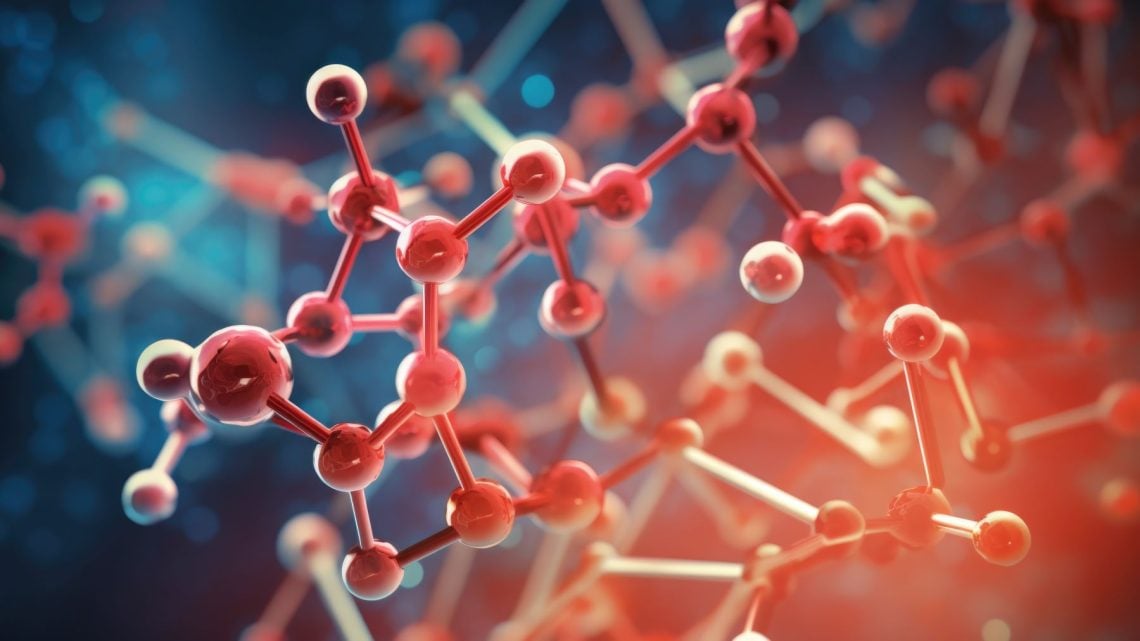The B7-33 peptide, a mimetic of the relaxin hormone, has garnered interest in recent years due to its potential impacts on cardiovascular function, particularly in the context of vasoprotection. This peptide has been associated with various mechanisms that may influence vascular integrity, mitigate endothelial dysfunction, and contribute to the modulation of inflammation.
Although its exact function in vascular biology remains a topic of active investigation, B7-33 is believed to offer promising avenues for novel approaches aimed at mitigating or attenuating vascular damage, which underlies many cardiovascular diseases (CVDs). This article will explore the purported mechanisms by which B7-33 might contribute to vasoprotection and highlight possible research implications within this domain.
Cardiovascular disorders remain the main cause of morbidity and mortality globally, with conditions such as hypertension, atherosclerosis, and heart failure posing significant challenges across species. A key factor in many of these conditions is the dysfunction of blood vessels, particularly the endothelium, which plays a paramount role in maintaining vascular homeostasis. Endothelial dysfunction is characterized by impaired vasodilation, better-supported responses to inflammation, and a pro-thrombotic state, all of which contribute to the progression of cardiovascular diseases.
B7-33 Peptide Structure and Mechanism of Action
B7-33 is a peptide analog of relaxin-2, designed to replicate key features of this hormone while maintaining a streamlined molecular structure. Relaxin-2 itself is familiar to scientists because of its role in pregnancy, where it contributes to vasodilation and remodeling of the cardiovascular system. B7-33 has been engineered to engage the same receptor as relaxin-2, the relaxin family peptide receptor 1 (RXFP1), which is expressed in various tissues, including vascular smooth muscle cells, endothelial cells, and fibroblasts.
B7-33 in Vascular and Endothelial Processes
A central aspect of vasoprotection is the ability of blood vessels to maintain appropriate vasomotor function. Endothelial cells lining the vasculature play a critical role in regulating the balance between vasodilation and vasoconstriction. Disruption of this balance is a hallmark of many cardiovascular conditions, including hypertension and atherosclerosis.
Studies suggest that B7-33 may contribute to vascular relaxation by supporting the bioavailability of nitric oxide within the endothelium. Nitric oxide is a potent vasodilator that helps reduce vascular resistance and maintain smooth blood flow. Through RXFP1 activation, B7-33 has been hypothesized to stimulate eNOS activity, leading to increased nitric oxide production. This increase in nitric oxide availability might support endothelial function, reducing the likelihood of vasoconstriction and subsequent vascular damage.
B7-33 Peptide and Inflammation
Chronic inflammation is a critical driver of vascular dysfunction and contributes to the pathogenesis of many cardiovascular diseases. Inflammatory processes might disrupt the normal functioning of endothelial cells, promoting oxidative stress, leukocyte adhesion, and a pro-thrombotic environment.
It has been proposed that B7-33 might exert anti-inflammatory impacts within vascular tissues. By activating RXFP1, the peptide may potentially inhibit the expression of pro-inflammatory cytokines, such as tumor necrosis factor-alpha (TNF-α) and interleukin-6 (IL-6), which are commonly upregulated in cardiovascular disease states. Additionally, research indicates that B7-33 may reduce the adhesion of immune cells to the endothelium, thereby limiting the infiltration of inflammatory cells into the vascular wall. This may attenuate the progression of vascular inflammation and support overall vascular function.
Vascular Processes and Fibrosis
Vascular remodeling is a process characterized by changes in the structure and function of blood vessels in response to mechanical, chemical, or inflammatory stimuli. In pathological conditions, such as hypertension and atherosclerosis, remodeling may lead to stiffening of the arteries, narrowing of the vessel lumen, and increased risk of cardiovascular events.
Investigations purport that B7-33 may influence vascular remodeling by modulating the activity of matrix metalloproteinases (MMPs), enzymes that degrade extracellular matrix components and play a key role in tissue remodeling. It has been hypothesized that through RXFP1 activation, B7-33 might promote the expression of MMPs that facilitate the breakdown of excess collagen in the vascular wall, reducing fibrosis and mitigating vascular stiffening.
B7-33 in Cardiovascular Research
The potential vasoprotective properties of B7-33 suggest several avenues for its implication in cardiovascular research. One area of interest is its possible role in mitigating or aiding hypertension, a condition characterized by increased vascular resistance and arterial stiffness. Findings imply that B7-33 might offer a novel approach to mitigating hypertension by promoting vasodilation and reducing arterial stiffness.
Another potential implication is in mitigating atherosclerosis, a disease marked by the accumulation of plaques within the arterial wall. By modulating inflammation, reducing oxidative stress, and promoting endothelial function, B7-33 might theoretically slow the progression of atherosclerotic plaques and decrease the risk of plaque rupture, a major cause of heart attacks and strokes.
Findings imply that the B7-33 peptide represents a promising candidate for vasoprotection and cardiovascular function. Its potential to support endothelial function, promote vasodilation, mitigate inflammation, and reduce vascular remodeling opens several avenues for research into cardiovascular disease mitigation. Although more investigations are needed to fully elucidate the mechanisms underlying its impacts, B7-33 offers a compelling area of inquiry for future vascular research and research development.
References
[i] Relaxin and Cardiovascular Function Samuel, C. S., & Hewitson, T. D. (2006). Relaxin in cardiovascular and renal disease. Kidney International, 69(9), 1498-1502. https://doi.org/10.1038/sj.ki.5000360
[ii] Relaxin Family Peptide Receptor (RXFP1) Signaling Hossain, M. A., Rosengren, K. J., & Bathgate, R. A. (2012). The structure and signaling mechanism of relaxin family peptide receptor 1 (RXFP1). Journal of Biological Chemistry, 287(52), 42023-42030. https://doi.org/10.1074/jbc.R112.418848
[iii] Nitric Oxide in Vascular Endothelium Förstermann, U., & Sessa, W. C. (2012). Nitric oxide synthases: Regulation and function. European Heart Journal, 33(7), 829-837. https://doi.org/10.1093/eurheartj/ehr304
[iv] Inflammation and Cardiovascular Disease Libby, P., & Hansson, G. K. (2015). Inflammation and immunity in diseases of the arterial tree: Players and layers. Circulation Research, 116(2), 307-311. https://doi.org/10.1161/CIRCRESAHA.116.301313
[v] Matrix Metalloproteinases in Vascular Remodeling Johnson, J. L., & Galis, Z. S. (2004). Matrix metalloproteinases: Role in the progression of atherosclerosis and therapeutic prospects. Circulation, 110(5), 522-530. https://doi.org/10.1161/01.CIR.0000137826.18679.10




